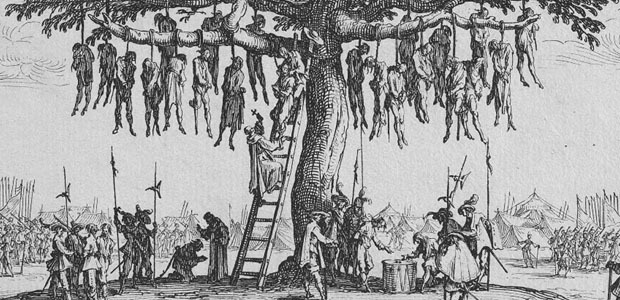
Hanging can be divided into two types: suspension by the limbs as a form of torture, and hanging by the neck as a form of capital punishment.
Strappado is a form of torture in which the victim’s hands are first tied behind his back, and then he is suspended in the air by means of a rope attached to wrists, which most likely dislocates both arms. Weights may be added to the body to intensify the effect and increase the pain.
Other names for strappado include „reverse hanging“ It is best known for its use in the torture chambers of the medieval Inquisition.
There are three variants of this torture. In the first one, the victim has his or her arms tied behind their back; a large rope is then tied to the wrists and passed over a pulley, beam or a hook on the roof. The torturer pulls on this rope until the victim is hanging from the arms. Since the hands are tied behind the victim’s back, this will cause a very intense pain and possible dislocation of the arms. The full weight of the subject’s body is then supported by the extended and internally-rotated shoulder sockets. While the technique shows no external injuries, it can cause long-term nerve, ligament, or tendon damage. The technique typically causes brachial plexus injury, leading to paralysis or loss of sensation in the arms.
The second variation is similar to the first, but a series of drops is added, meaning that the victim is allowed to drop until his or her fall is suddenly checked by the rope. In addition to the damage caused by the suspension, the painful jerk would cause major stress to the extended and vulnerable arms, leading to broken shoulders.
In the third variant, the victim’s hands are tied to the front. The victim is also hung from the hands, but the ankles are tied and a heavy weight is attached to them. This will cause pain and possible damage not only to the arms, but also to the legs and hips. This variant was known as „squassation“.








